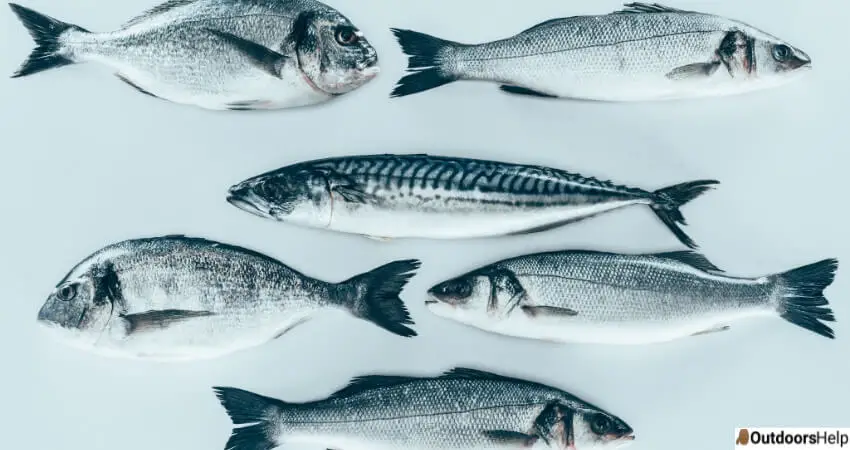From a scientific point of view, fish are divided into bony and those without bones. Some fish have no swim bladder and no gill caps; hence, boneless. Our list compiles all the fish without bones; we have compiled various categories that vary in usefulness, taste, safety, rareness, affordability, and those people like and those they don’t like. Can you guess some of them before reading through all the information we have provided for you in this article? Read through to the end to get answers to all your questions.
Fish without bones are those lacking small forked bones. They are divided into various categories and can be found in rivers, lakes, and seas. Some examples include skates, rays, and different sharks.
The topic of boneless fish is a very interesting topic that has probably lingered in your mind, and I’m sure you must have come across it in various conversations. But before we get into it, let’s first understand their classification better to understand this type of fish and its characteristic features.
Classification Of Fish Without Bones:

According to research, all fishes are part of the Kingdom Animalia and Phylum Chordata, possessing a spinal cord. They are then divided into two other classes of those without bones;
1. Class Agnatha (Jawless fishes)
2. Class Chondrichthyes (Sharks and rays)
Please read on as we take you through each of them in detail;
Class Agnatha:
They are astonishing to look at, and some of the characteristics include;
1. Lifeless and faceless appearance
2. Lack jaws as they are long and look like eels.
Some of the examples are;
Lampreys:
This type of boneless fish lives very different lifestyles from the hagfish, though they are the closest living ancestors. Latching on with their teeth as they are all parasites, they secrete anticoagulants into the bloodstream of the fishes as they attach themselves to them. This keeps the fish’s blood from clotting and allows them to drink just like a leech or a mosquito. Sometimes it will detach, leaving the host alive though wounded; other times, it will kill its host.
The adults spawn in freshwater, much like salmon. Young lampreys tend to get into saltwater return s adults only when they are ready to reproduce themselves. They have caused immense damage to the sport and commercial fishing industry. At least one species of lampreys has become landlocked in the Great Lakes.
The Hagfish:
Hagfish depend on their sense of smell to find food, and they play the role of decomposer. This type of fish lives at the depths of 100-3,150 feet and can be found in both the Pacific and Atlantic oceans.
Characteristics:
1. They are less fish-like and more worm-like.
2. Have not much belonged to a typical fish as they have no fins, no mouth, and eyes.
They are some of the deep oceans’ most scavengers as they are still fish regardless of their body features. By entering through the mouth and settling in the stomach, they invade the bodies of sick fish. That is so gross. The worst part of it is they can eat their hosts from inside out once they are lodged inside. They can produce plentiful amounts of slime, hence the name Slime Hags. This slime is helpful in two major ways;
1. It acts as a great deterrent for potential predators.
2. A form of protection from their hosts’ digestive juices.
Class Chondrichthyes:
All skates, rays, sharks, and sawfish belong to this class. Sharks and rays look nothing alike to most untrained eyes but are very structurally similar. Rays have a mouth underneath instead of in front of their body, with the noticeable exception of a kite-like body. Rather than bone, all the members of this class have a skeleton made of cartilage. More flexible than the bone, this is useful because the cartilage is lighter., several shark and ray species are Inhabiting all of the habitats of the ocean.
Physical Characteristics:
1. They have a natural tendency to sink due to the lack of an air bladder. For instance;
– functioning much like airplane wings, most sharks have shaped pectoral fins, and what gives them lift is the water moving over their fins.
– serving to provide lift while swimming, rays’ wings are nothing more than oversized pectoral fins.
1. Instead of the one that the bony fish have, most sharks and rays have five to seven-gill slits.
2. A movable jaw and well-developed teeth are a feature of almost all sharks and rays.
3. Giving them rough armor-like skin, they have placoid or hook-shaped scales.
4. They all have a tough but flexible supporting tissue with a skeleton made of cartilage.
– Chimeras have long bodies that narrow to a whip-like tail with large heads. They have no scales with smooth and rubbery skin.
– Sharks, rays, and skates have a sandpaper skin-like covering rather than scales with gills opening to the outside and no swim bladders.
– From tiny to huge, the sharks range in size.
– Sometimes, with long, whip-like tails, skates and rays have massive pectoral fins and are flat from top to bottom.
Geographic Range:
1. Except in the Antarctic region, chimeras, sharks, rays, and skates are found worldwide.
Behavior And Reproduction:
1. All of them reproduce through fertilization internally, where the egg and
sperm unite inside the female.
2. In other species, the young hatch within the mother and are born swimming freely after
developing inside the mother, while the young develop outside their mother in some species.
3. Before laying eggs or giving birth to pups, chimeras, sharks, rays, and skates, engage in parental care.
Habitat:
1. In open waters or at the bottom of the sea, sharks live in the coastal waters, out or bottom.
2. In saltwater or freshwater, rays and skates live back and forth between the two on the bottom.
3. Near the shore, chimeras habitually live on muddy bottoms.
Diet
1. Clams, crabs, and fishes are some of the bottom-dwelling animals that chimeras feed on.
2. Bony fishes and bottom-dwelling shelled animals are the food for most rays and skates.
3. Hunting and eating every sort of sea animal, some sharks are fierce predators while others feed on plants and animals that are microscopic and drift in water bodies. They are called planktons.
Their Usefulness:
1. Sharks are useful for oil, meat, and hides which are to make leather.
2. Rays’ and skates’ skin is sometimes used for making leather, and in some areas, they are also used for food.
3. Some species of chimeras are used for food commercially.
Other Examples Of Fish Without Bones:
| Species: | Description | Where found: |
| Codfish | Most popular boneless sea fish | Deep-sea |
| Salmon | Salmon is a common name for the salmon family, which includes both passersby and freshwater fish. Salmon produces red caviar, which is a delicacy. Other boneless fish in the salmon family are keta, humpback salmon, sigs, and taimen | Lakes |
| Trout | Also, a member of the salmon family that lives in freshwater lakes | Lakes |
| Sturgeon | Has bony cartilages, is freshwater, and semi-aquatic fish. They are famous for living up to 100 years and producing black caviar.Other genera of sturgeon include: beluga, Kaluga, sevruga, and ship | Rivers |
| eels | Found in the sea and some rivers. They’re known to be passively poisonous | Rivers |
| Mackerel fish | Sea fish that don’t have bones, there are various fish in the mackerel family, including tuna | Seawater |
| Rag fish | They are freshwater fish that also belong to the sturgeon family | Ponds and lakes |
Conclusion:
Fish have essential fats that our bodies don’t produce; it is a healthy high-protein food essential for its omega-3 fatty acids. These fatty acids are essential in the following ways;
1. Effective in the health of the heart and brain.
2. Reduces the risk of heart diseases.
3. Help in decreasing inflammation.
4. In babies, they are vital for prenatal development.
Boneless fish, those we can catch and cook, are said to be the most healthy and delicious. Next time you want to have some sumptuous fish, try the boneless type. After reading through all the facts and information in this article, I am sure you now better understand the various types of boneless fish. You can differentiate each of them simply with all the confidence depending on their variance in characteristic features. Hoping all your questions are well answered, you can now explore the world with proven facts. Good Luck!

